Cargando...
Recursos educativos
-
Nivel educativo
-
Competencias
-
Tipología
-
Idioma
-
Tipo de medio
-
Tipo de actividad
-
Destinatarios
-
Tipo de audiencia
-
Creador
Lo más buscado
- Experimentos de ciencias para P5
- Música moderna
- Juegos matemáticos
- Letras Q
- Letras T
- Uso de g y j
- Cómic para rellenar
- Ejercicios escolares para niños de 7 años
- Arte español para segundo
- Actividades didacticas en P3
- Experimentos en cuarto
- Actividades de lectoescritura en cuarto
- Comunicación animal
- Canciones para dormir
- El Egeo y Persia
-
The simplest invertebrates
EduBook Organización
- 3600 visitas
The most common invertebrates are sponges, cnidarians, flatworms, nematodes, annelids, molluscs, echinoderms and arthropods. 1.1. Poriferans or sponges Sponges are aquatic animals. They act as filters…
-

Investigate - Animal reproduction
EduBook Organización
- 1 lo usan
- 3393 visitas
Reproduction is the only vital function that is not needed to keep an individual alive. It ensures the continuation of the species. Although sexual reproduction is a universal characteristic of animals,…
-

True/false. The simplest invertebrates
EduBook Organización
- 3385 visitas
Are the following sentences true or false? Sponges are plants that live on rocks in the sea. Sponges have cells with flagella, called choanocytes, to move around. Most flatworms are parasites.…
-
Summaries - The Animal Kingdom (I). Invertebrates
EduBook Organización
- 3039 visitas
1. The simplest invertebrates The most common invertebrates are sponges, cnidarians, flatworms, nematodes, annelids, molluscs, echinoderms and arthropods. Sponges are aquatic animals. They act as…
-
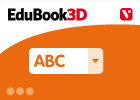
Final self-evaluation 10.01 - The Animal Kingdom (I). Invertebrates
EduBook Organización
- 2932 visitas
Are the following sentences true or false? Sponges are aquatic animals that filter water to obtain food. Jellyfish are a type of sponge. Cnidarians have venomous cells that paralyse their prey.…
-

Before you start - Living things
EduBook Organización
- 2852 visitas
Didactic objectives Recognise the characteristics of living things. Identify the main activities of living things. Understand that living things are sensitive to their environment. Recognise that living…
-
Remember - Animal reproduction
EduBook Organización
- 1 lo usan
- 2578 visitas
Reproduction is the only vital function that is not needed to keep an individual alive. It ensures the continuation of the species. Although sexual reproduction is a universal characteristic of animals,…
-
The cell - Introduction
EduBook Organización
- 2732 visitas
1. From biomolecules to organisms The molecules that make up living things, biomolecules, join together to form large molecules called macromolecules. The next level of complexity is the cell, which is…
-
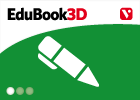
Answer. Living things
EduBook Organización
- 2698 visitas
Look at the pictures, think and answer: What is a cell? Can you see an image of cells in the picture? What other types of living things can you see in the picture? Name two differences between the…
-

Complete. Human reproduction
EduBook Organización
- 2370 visitas
Complete the text, writing the words in the correct spaces: zygote testicles umbilical cord cells embryo ovaries uterus sexual intercourse nine different The male reproductive system is made up of the…
Te estamos redirigiendo a la ficha del libro...













